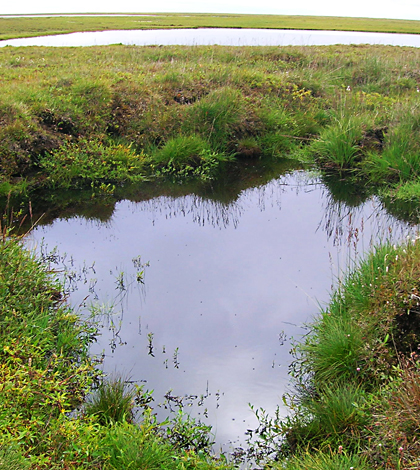Some Arctic lakes absorb more carbon than they emit, have net cooling effect

Thermokarst lakes occur as permafrost thaws and creates surface depressions that fill with melted freshwater. (Credit: Katey Walter Anthony / University of Alaska Fairbanks)
A new study published in Nature shows that some Arctic lakes sequester more greenhouse gases than they release, according to a release from the National Science Foundation.
Previous research suggested that thawing Arctic permafrost, a process that leads to the creation of ephemeral thermokarst lakes, speeds atmospheric warming at a uniform rate. The new study, funded by the National Science Foundation, indicates that organically rich sediments, mosses and other plants in certain thawed lakes help absorb high levels of carbon.
The researchers used previously published data, field observations, radiocarbon dating and modeling to determine that Arctic lakes have actually exhibited a net cooling effect on the atmosphere for the last 5,000 years, when examined on a millennial scale.
Image: Thermokarst lakes occur as permafrost thaws and creates surface depressions that fill with melted freshwater. (Credit: Katey Walter Anthony / University of Alaska Fairbanks)




0 comments